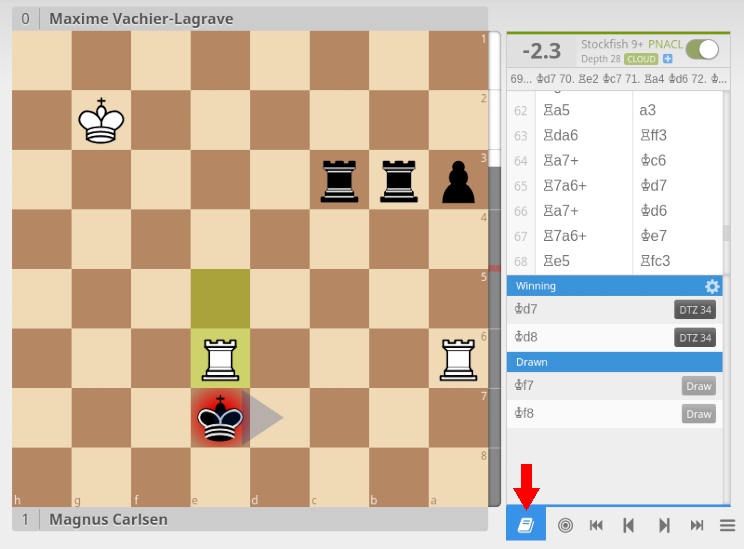

In 1766 Carlo Cozio published analysis of 127 endgame positions, but it was not a practical handbook ( Golombek 1977:101). His material came from several sources, including analysis by Philidor ( Golombek 1977:101).

Lolli's 315-page book was the first giving practical research. However, Lolli did find the unique position of mutual zugzwang in this endgame (see diagram) ( Stiller 1996:154), ( Nunn 2002:298). Later this was overturned by computer endgame tablebases, when Ken Thompson found a 71-move solution. He studied the endgame of a queen versus two bishops and agreed with the earlier opinion of Salvio that it was generally a draw. Lolli's book was based on del Rio's work and was one of the most important for the next 90 years. In the eighteenth century important books were written by Italians (the "Modenese Masters") Domenico Lorenzo Ponziani, Ercole del Rio (1750), and Giambattista Lolli (1763) ( Horwitz & Kling 1986). The only mutual zugzwang position with this material. In the fifteenth and sixteenth centuries a few types of endgames were studied, and opposition was known ( Golombek 1977:101). A thirteenth-century Latin book by an unknown author examined the endgame of a knight versus a pawn, and formed the basis of later work by Alexey Troitsky in the twentieth century. However, these are from before the rule of pawn promotion, so most are of little value today ( Golombek 1977:101). The study of a few practical endgames are found in Arabic manuscripts from the twelfth and thirteenth centuries. 2.2 Large, more comprehensive one-volume books.These endgame strategy books fill the gap from the end of the middlegame to where the other type of books takes over. However, an increasing number of books are about endgame strategy, where exact analysis is not currently possible, due to the presence of more pieces. Most books cover endgames in which the proper course of action (see list of chess terms#Optimal play) has been analyzed in detail. Most books are one volume (of varying size), but there are large multi-volume works. Some endgame books are general works about many different kinds of endgames whereas others are limited to specific endgames such as rook endgames or pawnless endgames. Ken Thompson, Eugene Nalimov, and other computer scientists have contributed by constructing endgame tablebases. Many chess masters have contributed to the theory of endgames over the centuries, including Ruy López de Segura, François-André Philidor, Josef Kling and Bernhard Horwitz, Johann Berger, Alexey Troitsky, Yuri Averbakh, and Reuben Fine. A bibliography of endgame books is below. Chess endgame literature refers to books and magazines about chess endgames.


 0 kommentar(er)
0 kommentar(er)
